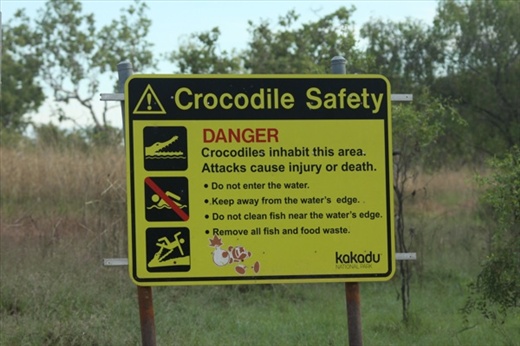The local indigenous people recognize six seasons but there really are only two, "The Wet" and "The Dry." April, the end of the Wet, averages one inch of rain per day, July just a few tenths for the entire month. May is somewhere in between; the Wet had ended and it is cooler, but the rivers are still swollen. Entire sections of Kakadu National Park are inaccessible. Several major paved roads, not just 4WD tracks, are still under water, which has limited the places we can visit.
Kakadu National Park is both a World Heritage site for both its cultural and natural values, one of only a handful of such places in the world. So it's no wonder Kakadu is on the Top End's "must see" list. Aboriginal peoples have lived in Australia for perhaps 60,000 years and they haven't been idle. For at least 20,000 years they have been creating outstanding rock art in Kakadu, stuff to rival the cave paintings in Altamira. It is impossible for us to determine whether a mural is 200 centuries old or if it was painted last week. The act of creating the art seems to be more important than the painting itself and paintings are superimposed upon one another, like recycled Renaissance canvases.

20% of Australia's mammal species are found here and one third of the birds rely on Kakadu's vast wetlands. As things dry out animals begin congregating around the shrinking lakes and ponds. These billabongs are a great place for birding - but don't go near the water! Crocodiles live here, big, quick, hungry ones. And they have acquired a taste for humans. Tastes like chicken?